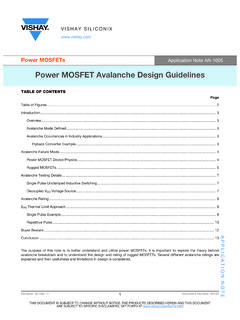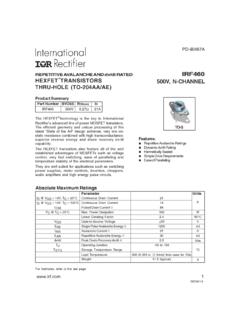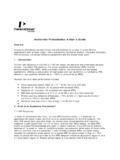Transcription of Heuristic Traps in Recreati onal Avalanche Accidents ...
1 Avalanche News, No. 68, Spring 2004 1 Heuristic Traps in Recreational Avalanche Accidents : evidence and implications by Ian McCammon Authors note: This article extends the findings I presented at the 2002 ISSW in Penticton, BC.
2 A full version of the article, including a description of the statistical methods used, appeared in the Avalanche Review (Vol. 22, nos. 2 & 3). You can download the two-part article at Several years ago, my buddy Steve died in an Avalanche . It was a stormy day and the Avalanche danger was high, but Steve and his partners felt that by choosing a familiar route and carefully managing their exposure, they could stay out of trouble. After all, they were experienced backcountry skiers with Avalanche training. Steve, the most skilled of the group, had just visited the area less than a week before.
3 Two hours into their tour, they met another party of skiers headed for the same pass and the low-angle slopes on the far side. They briefly discussed the Avalanche conditions, and agreed that prudent route selection was the key to safety that day. But ten minutes later, as Steve s group broke trail across a shallow, treed slope, they triggered an Avalanche that swept down on them from above. The Avalanche caught all three skiers, seriously injuring one man and completely burying Steve. The other party witnessed the accident and came to the rescue, but by the time they dug Steve out, he was dead.
4 In the aftermath of the accident , some people felt that Steve died because he took foolish risks that day. Traveling in Avalanche terrain during high hazard, they said, was reckless. They believed Steve s group had ignored obvious signs of danger, and that they were tempting fate by crossing under an Avalanche path in such conditions. The explanation sounded reasonable. But it didn t match what I knew about Steve. Weeks earlier, I had shared a lift ride with him at a local ski hill, and we had reminisced about our climbing adventures years before.
5 We laughed about how Steve used to love leading thin, difficult routes, often high above his protection. But things were different now, he said. He told me about his wife and his beautiful four-year-old daughter, and how his days of being reckless were over, and how the time for raising his family had begun. He still loved to ski and climb, he said, but now it was more about enjoying the outdoors and coming home afterwards than about taking risks. When he died, it was on a popular route in familiar terrain, on a slope traversed by dozens of people every season, in a place that he believed was safe.
6 As sad as this accident was, the real tragedy is that similar stories unfold in accident after accident , year after year. An experienced party, often with Avalanche training, makes a crucial decision to descend, cross, or highmark a slope they believe is safe. And then they trigger an Avalanche that buries one or more of them. In hindsight, the danger was often obvious before these Accidents happened, and so people struggle to explain how intelligent people with Avalanche training could have seen the hazard, looked straight at it, and behaved as if it wasn t there.
7 Heuristic Traps in Avalanche Accidents So how do people come to believe that a slope is safe, even when they are faced with likely evidence that it isn t? One possible explanation is that people are misled by unconscious heuristics, or rules of thumb, that guide most of our decisions in everyday Such heuristics work well for dealing with routine risks such as driving, using crosswalks, or avoiding social embarrassment. But as we ll see, avalanches present a unique hazard that renders some of our heuristics irrelevant, and in some cases dangerously misleading.
8 When a rule of thumb gives us a grossly inaccurate perception of a hazard, we fall into what is known as a Heuristic trap. Six heuristics in particular are recognized as being widely used in our daily decisions: familiarity, consistency, acceptance, the expert halo, social facilitation and Because these heuristics work so well and because we ve used them for much of our lives, we are largely unaware of using them, even when we are making critical decisions. Such conditions are fertile ground for Heuristic Traps . To study the possible influence of these six Heuristic Traps in Avalanche Accidents , I reviewed 715 recreational Accidents that took place in the United States between 1972 and 2003.
9 Data for the study came from records maintained by the Colorado Avalanche Information Center, published accounts in the Snowy Torrents (Williams and Armstrong, 1984; Logan and Atkins, 1996), the Westwide Avalanche Network, the Cyberspace Snow and Avalanche Center, Avalanche forecast center annual reports, and various Internet and newspaper resources. We will see that there is good evidence that many Avalanche victims fell prey to one or more Heuristic Traps . But because this study is based on accident data, it can only demonstrate correlations between victims behavior and the presence of Heuristic trap cues.
10 2 Without doing controlled experiments on people s behavior in Avalanche terrain (which would be problematic, to say the least), it is not possible to conclusively establish causation of Accidents by heuristics Traps . Thus, the conclusions of this study should be viewed as preliminary other causative factors may be at work.





